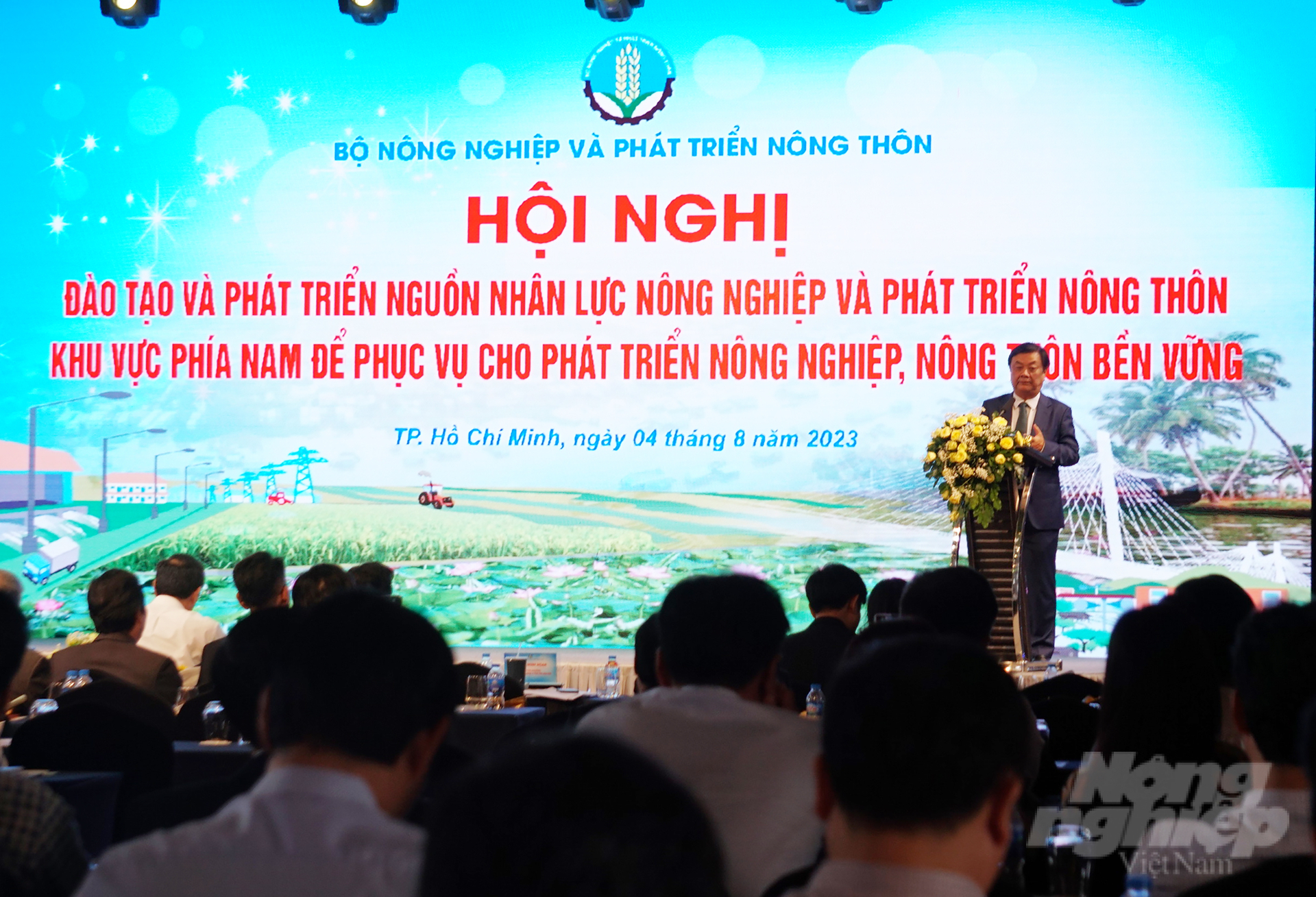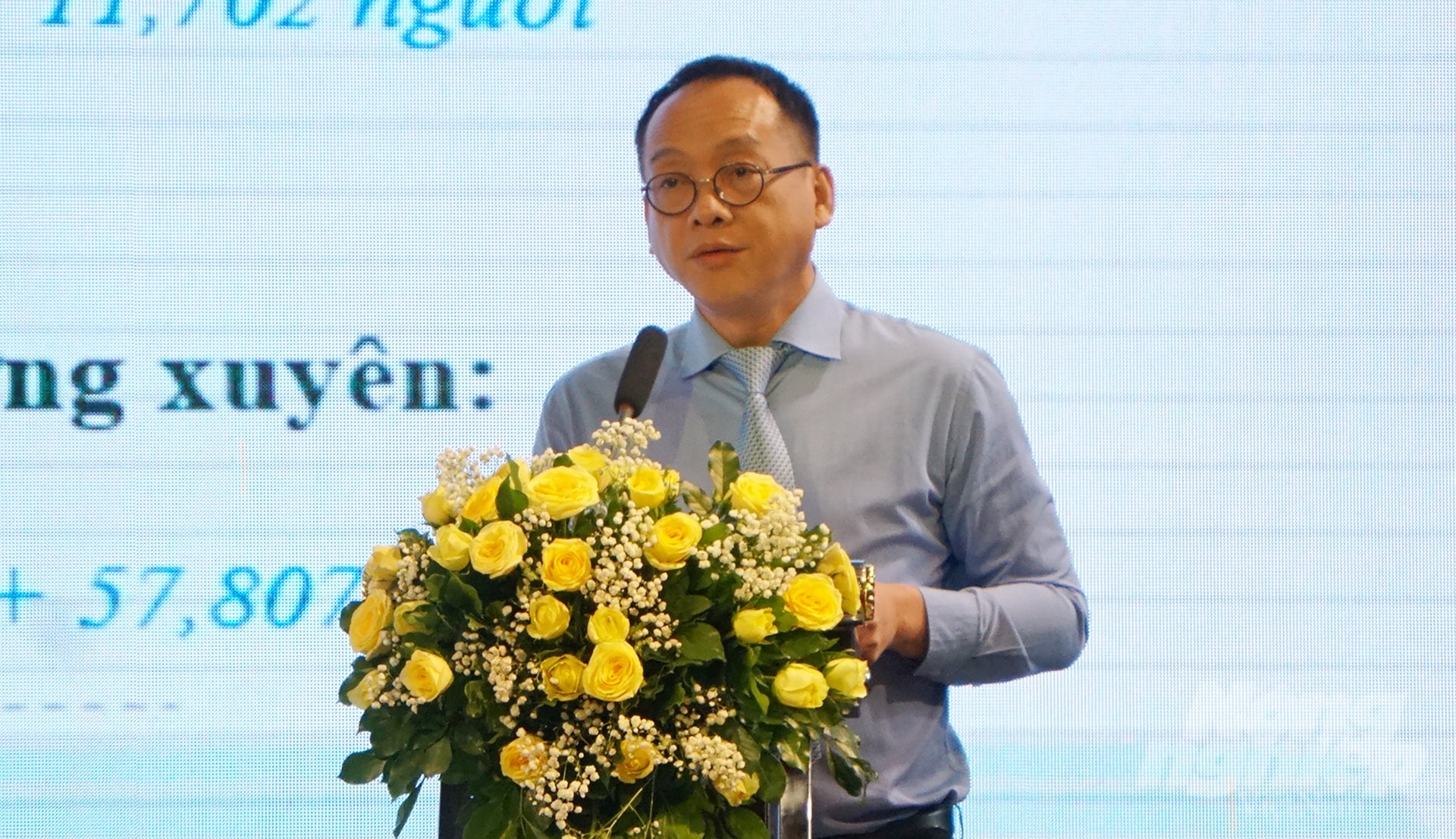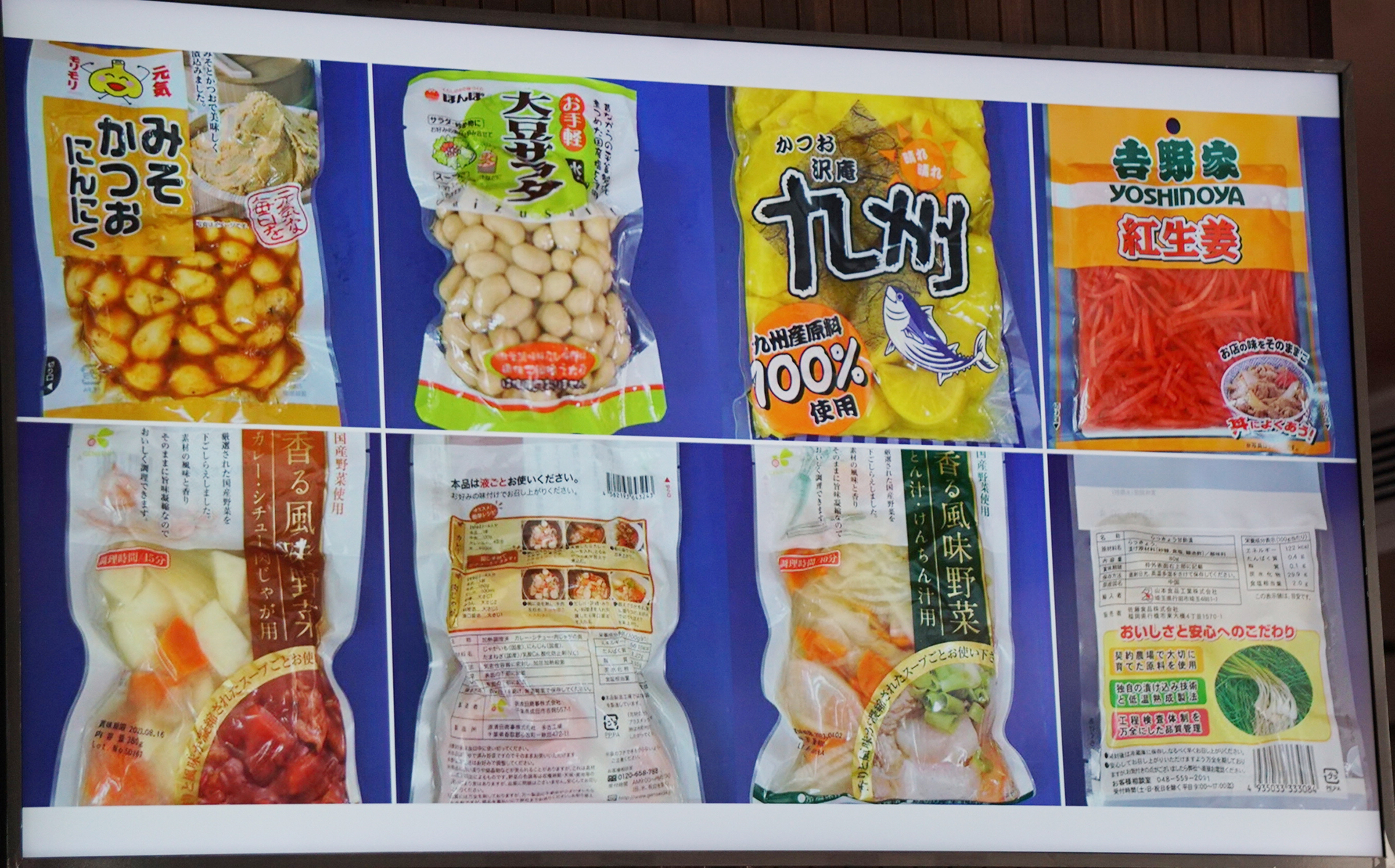
Minister of Agriculture and Rural Development Le Minh Hoan chairing the conference.
Photo: Nguyen Thuy.
Low Quality of Agriculture, Forestry, and Fisheries Labor
On August 4th, Minister of MARD, Le Minh Hoan, hosted the conference on "Training and Developing Human Resources for Sustainable Agriculture and Rural Development in the Southern Provinces"
The conference aimed to assess the achieved results and identify areas needing improvement to develop high-quality vocational training that meets the sustainable development needs of the agriculture and rural sector by 2025 with a view to 2030.
During the period 2005 - 2020, the value of agricultural production in the Southeast region continued to grow at an average rate of 4.63% per year. The Southeast region leads the country in rubber, cashew nuts, pig production, etc. with a forest coverage rate of 19.42%.
By the end of 2021, nearly 87% (368 out of 425) of the communes in the Southeast region had met the new rural standards, marking a significant increase of more than 44% compared to 2015. The region ranked second in the country for the number of communes achieving new rural standards, surpassing the national average by a considerable margin.
The Mekong Delta, known as the largest agricultural production region in the country, annually produces over 50% of rice, 65% of aquaculture products, 70% of various fruits, and exports 95% of the country's rice. With these contributions, the region accounts for an average of 34% of the national agricultural GDP and 30% of the overall GDP. The agricultural GDP growth rate in the Mekong Delta from 2004 to 2020 reached 4.6%, surpassing the national growth rate of over 3.7%.

Mr. Ngo Hong Giang, Head of Organization and Personnel Department, MARD.
Photo: Nguyen Thuy.
Mr. Ngo Hong Giang, Head of Organization and Personnel Department, MARD, acknowledged that significant results have been achieved in training and developing human resources in the region. The number of higher education institutions in the Mekong Delta increased from 13 in 2011 to 21 by 2020, training nearly 150,000 students. In the Southeast region, there are nearly 517,000 students, accounting for 30.2% of the national total – the second-largest in the country.
These institutions offer various programs related to agriculture, forestry, fisheries, and water resources, including Plant Protection, Livestock Farming, Forestry, Urban Forestry, Agriculture, Aquaculture, Fishery Processing Technology, Aquatic Veterinary Medicine, Forest Resource Management, Forestry Processing Technology, Veterinary Medicine, Agricultural Technical Education, Agricultural Biotechnology...
Besides higher education institutions, vocational education institutions are also involved in training human resources for the agricultural sector in the region. These include institutions under MARD and colleges, intermediate schools, and vocational training centers in provinces and cities.
From 2016 to 2022, four out of 28 colleges under MARD had trained workers for the southern provinces, including nearly 15,000 at the college level, over 41,000 at the intermediate level, and nearly 53,000 for short-term vocational training.
Furthermore, in addition to implementing the vocational training program for rural laborers, the provinces in the region have provided training at different levels, including 3,092 individuals at the college level, 11,702 individuals at the intermediate level, 138,149 individuals at the elementary level, and 390,136 individuals for short-term training courses of less than 3 months. The number of people receiving short-term training in the Southeast region is 57,807 (equivalent to 7.17% of the country's total), while the Mekong Delta region trained 332,328 individuals (accounting for 41.23% of the national total).
In addition to the achieved results, the training and development of human resources in the agricultural sector is facing difficulties and challenges such as the labor force in agriculture, forestry and fishery, which tends to decrease rapidly in recent years.
In the period from 2011 to 2020, the labor force in agriculture, forestry, and fisheries in the Southeast area decreased sharply from 1.24 million in 2011 to 778 thousand in 2020, an average decrease of 46.7 thousand people per year.
The Mekong Delta's labor force aged 15 and above also decreased from 10.2 million to 9.36 million. The reduction was due to labor migration to seek employment in industrial zones and urban areas in other regions.
In general, the quality of labor in agriculture, forestry, and fisheries remains low. The proportion of labor with technical qualifications from elementary-level vocational training and above in these sectors is low, specifically 7.4% in the Southeast region and 2.21% in the Mekong Delta. The majority of the workers in these regions are unskilled, doing seasonal work and lacking highly skilled labor.
Moreover, the workforce also lacks the necessary skills and professional qualifications, with a considerable proportion not recognized as having national vocational skills. Many graduates find it challenging to secure jobs matching their training due to not meeting the requirements of employers and the labor market.
Traditional agriculture sectors at all levels have experienced a decline in training. Specifically, agricultural science, extension, livestock farming, agriculture, crop science, rural development, agricultural economics, and plant protection experienced reductions in most training levels. For fisheries, significant reductions occurred in the fields of fishing, oceanic resource management and exploitation, and aquatic science. As for forestry, the decline was evident in forest science, forestry, forest resource management, and urban forestry. In the field of water management, there were decreases in water resources engineering, hydrology, and water supply and drainage techniques…
Regarding the management of agricultural cooperatives, despite an increase in the proportion of managers with higher education and intermediate degrees compared to the past, a large number of cooperative members and officers still lack diplomas and certificates. They have only received elementary vocational training or short-term courses of less than 3 months, resulting in less effective performance. The overall knowledge of market conditions, management, and administration among cooperative managers remains inadequate. Many managers are old and have reached retirement age without any formal training, leading to difficulties in governance and a lack of adaptability to the strong development of science and technology, market mechanisms, e-commerce applications, and digital transformation.
Piloting the Japanese Model of Agricultural Human Resource Training
In light of these challenges, the Party Committee of MARD has issued Resolution No. 37-NQ/BCSD on "Renewing and Enhancing the Effectiveness of High-Quality Vocational Training to Meet the Requirements for the Development of the Agriculture and Rural Sector by 2025 with a view to 2030".
The resolution sets the goal of striving to train about 1.5 million rural laborers annually across the country by 2030, with over 70% of agricultural laborers receiving training. The proportion of trained laborers with diplomas and certificates (from elementary level and above) in the fields of agriculture, forestry, and fisheries is set to increase from 4.6% in 2020 to 10% in 2030. The Ministry aims to enroll an average of 200 doctoral students, 2,500 postgraduate students, 20,000 undergraduate students, 8,000 college students, 20,000 intermediate students, and 40,000 elementary students each year. Moreover, they aim to have agricultural, forestry, water management, and fisheries programs account for 40% of master's programs (currently 37%), 30% of undergraduate programs (currently 24%), and 20% of college and intermediate programs (currently 15.1% and 12.6%, respectively), etc.
To achieve these goals, MARD will focus on enhancing communication to raise awareness among officials, party members, civil servants, and people about agricultural human resource training.
Additionally, it is also necessary to reorganize and improve the effectiveness of training institutions, enhance the training and development of faculty, scientists, and leading experts.

Products of Japanese high school students are offered at supermarkets.
MARD will also implement mechanisms for assigning tasks, and orders and coordinating related programs and projects of the Ministry effectively.
Doing so requires the mobilization and usage of state and social resources effectively to train high-quality human resources and develop a project to attract high-quality human resources to work in agriculture and rural development.
The orientation of agricultural vocational training and supplementary agricultural knowledge includes the implementation of agricultural courses for schools under the Ministry. These courses aim to equip students with basic agricultural knowledge, cultivate a passion for the agricultural industry, and provide skills for those who will serve in agriculture-related fields or non-agricultural sectors after graduation.
Additionally, the Ministry conducts research and expands the pilot model of intermediate-level agricultural human resource training in colleges, following the Japanese model. This pilot project targets high school graduates, ensuring they have a well-rounded education encompassing cultural knowledge, vocational skills, foreign languages, and an industrial attitude. Graduates are equipped to work in domestic agricultural enterprises, seek employment abroad, or pursue higher education.
Author: Nguyen Thuy - Phuc Lap
Translated by: Nguyen Hai Long
(Nguồn: Báo Nông nghiệp Việt Nam)




